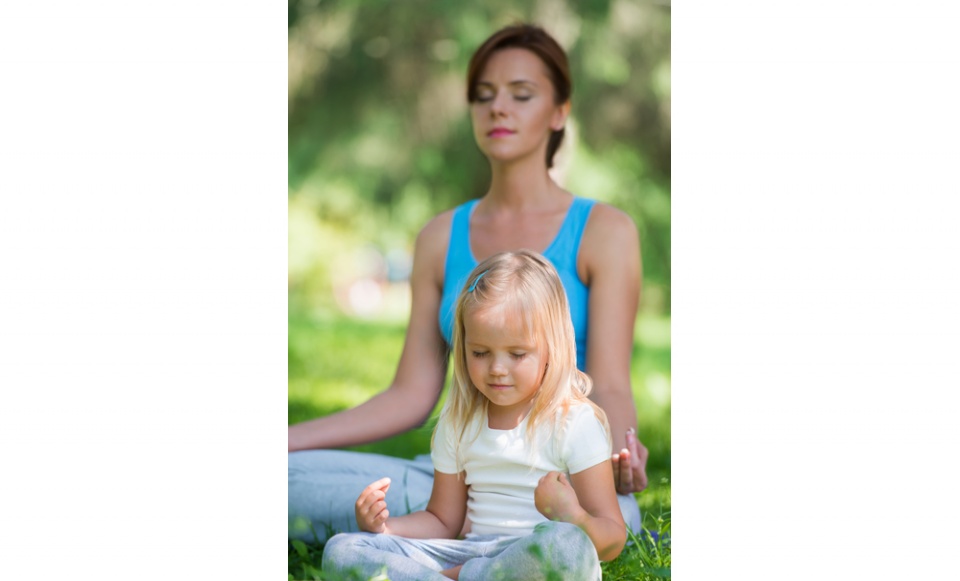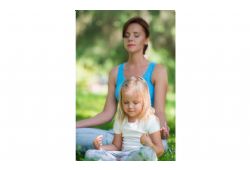When we think of meditation, many
images come to mind. There may even be certain stigmas associated with it. It
is often perceived as religion-based or as a “new age” doctrine, with yogis perched
in the lotus position chanting Ohm for hours on end.
In truth, there are many ways to
define meditation. But it can also be examined from a non-denominational, objective
lens. Its practice doesn’t need to be complicated or lofty. Meditation can
simply be about being still
and silent. It can be focusing on breath. It can be the art of calming our minds.
Andrea Pinto has been teaching
meditation and yoga for over thirty years. She taught various groups ranging in
age from 3 to 103. Pinto has her own view on meditation. “Meditation fosters
feelings of ease and calm, peacefulness, contentment, happiness and in higher
states, even pure joy and pure bliss,” says Pinto. “In any moment, it is being
able to choose a state of mind that is beneficial to you.”
In today’s modern culture, meditation
can be a valuable tool with a host of benefits. There is an abundance of
literature about its remarkable benefits. For instance, its practice has been
known to alleviate
stress, worry, anxiety and depression. It can help build self-esteem and
self-awareness. It can even combat a wide variety of illnesses. Pinto adds, “And
best of all, there are absolutely no adverse side effects. I think that
in this day and age, we all know that a positive state of mind has a strong
positive influence on one's health, relationships, and job.”
In short, meditation can improve our lives. Our schedules
are over-packed and we feel the need to fill up each moment. We get distracted.
We obsess over the past and stress about the future. Meditation suggests that when
you sit in stillness, our mindset can be changed. We are rooted in the present
moment. From there, we can escape the ongoing clamour of our mind and examine
things in a more objective manner.
Its practice can be beneficial for the whole family. Meditation
teachers agree that children can also reap its benefits. “Children are naturals
when it comes to meditating because they have a natural propensity for joy, and
for seeking their own happiness,” explains Pinto.
Parents may wonder how to get their restless child to
actually sit down, let alone meditate. Pinto advises, “Enjoyment, play, and fun
must be at the heart of it, because that is at the very heart of every child.
Whether employing animal postures or funny movements to allow the body to take
different shapes which increase strength, flexibility and balance, or using
breathing techniques like slowly blowing out many candles on a birthday cake,
the key is a happy state of mind.”
In other words, meditation should be practiced in a
lighthearted and simple way. If you would like to initiate a meditation
practice in your family, start with the basics. The idea is to take a break
from your busy life and carve out some sacred time. There are meditation classes,
books and videos to inspire you. See what resonates with you and incorporate
that into your life. Keep an open mind and see what benefits meditation can
bring to your entire family.

 In The Latest Issue:Latest Issue:
In The Latest Issue:Latest Issue:
- Celebrating Community an...
- Celebrating the Unsung H...
- Understanding Newborn St...
Articles
Calendar
Virtual- ANNUAL TEACHER APPRECIATION CONTEST
- APPUI LAVAL
- ARTS & CULTURE
- CAMPS
- CAR GUIDE
- CCIL
- CENTENNIAL ACADEMY
- CHARITY FUNDRAISING
- CITYTV
- COSMODÔME
- COMMUNITY CONNECTIONS
- COVER STORY
- DINA DIMITRATOS
- ÉCOLE SUPÉRIEURE DE BALLET DU QUÉBEC
- EDITORIALS
- ÉDUCALOI
- EDUCATION
- EMPLOYMENT & ENTREPRENEURSHIP
- FÊTE DE LA FAMILLE
- FÊTE DU QUARTIER SAINT-BRUNO
- FAMILIES
- FESTIVAL LAVAL LAUGHS
- FÊTE DE QUARTIER VAL-DES-BRISES
- FINANCES
- GLI CUMBARE
- GROUPE RENO-EXPERT
- HEALTH & WELL-BEING
- 30 MINUTE HIT
- ANXIETY
- CHILDREN`S HEALTH & WELLNESS
- CLOSE AID
- DENTAL WELLNESS
- EXTREME EVOLUTION SPORTS CENTRE
- FONDATION CITÉ DE LA SANTÉ
- GENERAL
- HEARING HEALTH
- MESSAGES FROM THE HEALTH AGENCY OF CANADA
- MENTAL HEALTH
- SEXUALITY
- SOCIAL INTEGRATION
- SPECIAL NEEDS
- TEENS
- THE NUTRITION CORNER
- THE NUTRITION CORNER - RECIPES
- VACATION DESTINATION
- WOMEN'S FITNESS
- WOMEN'S HEALTH
- HILTON MONTREAL/LAVAL
- HOME & GARDEN
- INTERNATIONAL WOMEN'S DAY
- JAGUAR LAVAL
- LAVAL À VÉLO
- LAVAL FAMILIES TV SHOW
- LAVAL FAMILIES MAGAZINE CARES
- LAVAL URBAN IN NATURE
- LE PARCOURS DES HÉROS
- LES PETITS GOURMETS DANS MA COUR
- LEON'S FURNITURE
- LEONARDO DA VINCI CENTRE
- LFM PREMIERES
- LIFE BALANCE
- M.P. PROFILE
- MISS EDGAR'S AND MISS CRAMP'S SCHOOL
- MISSING CHILDREN'S NETWORK
- NETFOLIE
- NORTH STAR ACADEMY LAVAL
- OUTFRONT MEDIA
- PASSION SOCCER
- PARC DE LA RIVIÈRE-DES-MILLE-ÎLES
- PÂTISSERIE ST-MARTIN
- PIZZERIA LÌOLÀ
- PLACE BELL
- PORTRAITS OF YOUR MNA'S
- ROCKET DE LAVAL
- SACRED HEART SCHOOL
- SCOTIA BANK
- SHERATON LAVAL HOTEL
- SOCIÉTÉ ALZHEIMER LAVAL
- STATION 55
- STL
- SUBARU DE LAVAL
- TECHNOLOGY
- TEDXLAVAL
- TODAY`S LAURENTIANS AND LANAUDIÈRE
- TODAY`S LAVAL
- WARNER MUSIC
- THIS ISSUE
- MOST RECENT
Magazine
The Simplicity of Meditation
Articles ~e 105,7 Rythme FM 4 chemins Annual Teacher Appreciation Contest Appui Laval Arts & Culture Ballet Eddy Toussaint Camps THIS ISSUE MORE...
CONTESTS Enter our contests
CONTESTS Enter our contests
CALENDAR
Events & Activities
COMMUNITY Posts Events
PUBLICATIONS Our Magazine Family Resource Directory
LFM BUSINESS NETWORK Learn more
COUPONS Click to save!
COMMUNITY Posts Events
PUBLICATIONS Our Magazine Family Resource Directory
LFM BUSINESS NETWORK Learn more
COUPONS Click to save!
SUBSCRIPTIONS
Subscribe to the magazine
Un-Subscribe
E-NEWSLETTER Subscribe to our E-newsletter Un-Subscribe
WRITE FOR US Guidelines & Submissions
POLLS Vote today!
E-NEWSLETTER Subscribe to our E-newsletter Un-Subscribe
WRITE FOR US Guidelines & Submissions
POLLS Vote today!
ADVERTISERS
How to & Media guide
Pay your LFM invoice
SUGGESTIONS Reader's Survey Suggest a Listing
LFM About Us Our Mission Giving Back Contact Us
SUGGESTIONS Reader's Survey Suggest a Listing
LFM About Us Our Mission Giving Back Contact Us
 PICK-UP LOCATIONS
Get a copy of LFM!
PICK-UP LOCATIONS
Get a copy of LFM!
TERMS & CONDITIONS Privacy | Terms
ISSN (ONLINE) 2291-1677
ISSN (PRINT) 2291-1677
Website by ZENxDESIGN




 BY:
BY: 


Tweet
Share